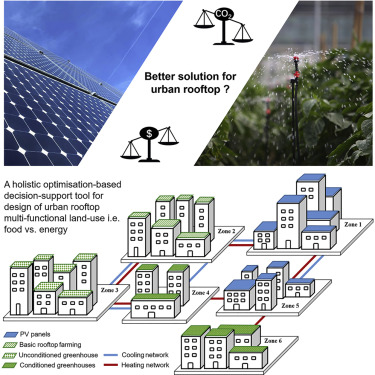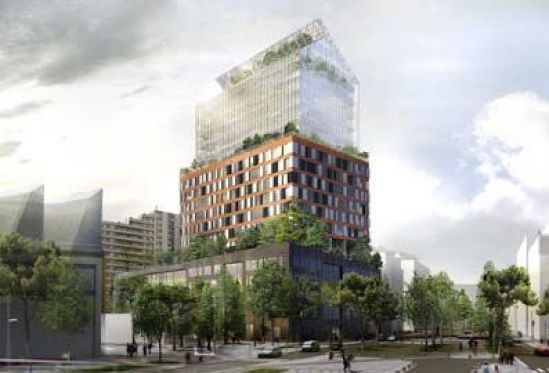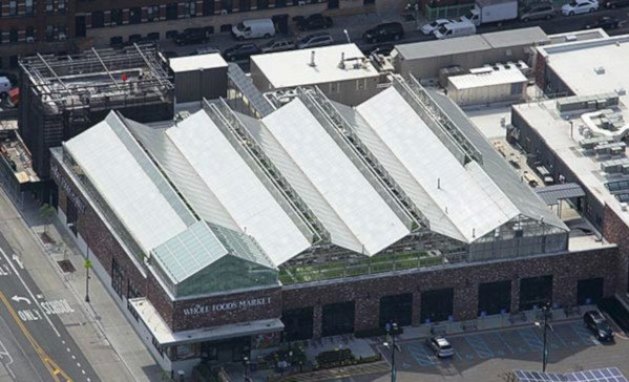Rooftop greenhouses. Advantages of urban agriculture in height

Today we will see some examples of rooftop greenhouses. There are already other blog posts about a very similar type of high-altitude urban agriculture: rooftop gardens. We even visited some in the city of Shanghai, such as the Anken Green Skyfarm we talked about in SKYFARM: A New Model for an Urban Garden in Shanghai. Whatever is up there (orchards, greenhouses, gardens…) there are many advantages of urban agriculture on top of buildings, on their rooftops or roof terraces. In this post we are going to see what the benefits of rooftop greenhouses are and why they are becoming more and more important in the cities of the 21st century.

There are very common technologies, such as wind or solar energy, that can be applied without any problem to high-rise orchards and greenhouses. All this, together with other techniques such as water recycling (from rain and clouds), can contribute enormously to the development of cleaner and more sustainable cities.
Why will rooftop greenhouses become a necessity in cities?
In a short time, growing on rooftops will be a matter of necessity, something beyond aesthetic aspects or mere presumption. Perhaps that is why it is so important to know now, in the present, why and how to build rooftop greenhouses.
The problem and the reason why rooftop greenhouses and allotment gardens are so important is basically this:

The world population continues to grow, and it is expected that by 2050 there will be 2 billion more people on the planet, 9 billion in total. Of all these people, as seen in the graph above, the majority live in cities, so we have:
- Overcrowded cities and, therefore, highly polluted
- Cities that demand more and more food because the population does not stop growing
This has a very negative effect on the environment and people’s health, especially in growing cities like many in China, where the need to build rooftop greenhouses and rooftop gardens is even greater. (More on this in Urban Agriculture in China: Why It’s Necessary.)

In Beijing (Pekin) 9,000 hectares of potential surface for cultivation on rooftops are estimated.
This solution would therefore be a good option to help alleviate the problem of lack of food (or the prevailing need to bring it from far away). Also, it would be good for other benefits of rooftop greenery, like pollution reduction.
Advantages of rooftop greenhouses
- Unused or underutilized spaces are used: the roofs of buildings
- Natural soil is not necessary: it can be grown using hydroponics or another type of cultivation technique without substrate
- Less pollution: the carbon footprint is reduced due to «km 0» Production (you eat close to where it is produced, avoiding the pollution derived from the transport of that food if it had been grown in rural areas), and also because the vegetation makes a ‘carbon sink’ that traps CO2 and other harmful greenhouse gases.
- Availability of natural lighting
- Sustainability: good location for recycling rainwater and clouds through fog catchers.
- Self-sufficiency: renewable energies (solar, wind energy…) can be installed for irrigation, automatic greenhouse systems, lighting… One of the latest technologies that has been developed in this regard are transparent solar panels: they generate energy and At the same time, they serve as a greenhouse cover.

Greenhouses on roofs of Gotham Greens, in Brooklyn (New York)
For these and other reasons, rooftop greenhouses have great potential. Although in countries like the US or Canada progress has already been made in the installation of rooftop greenhouses, in countries like China or Spain everything remains to be done.One of the main limitations for the expansion of rooftop greenhouses is the lack of social awareness, so with this post we wanted to contribute a grain of sand to help spread information about this type of sustainable urban agriculture.
Share if you like it!


![Photo of Indoor Plants [32 Examples, Types and Names]](https://www.complete-gardening.com/wp-content/uploads/2022/08/indoor-plants-32-examples-types-and-names-390x220.jpg)
![Photo of Aster: [Cultivation, Irrigation, Care, Pests and Diseases]](https://www.complete-gardening.com/wp-content/uploads/2022/08/aster-cultivation-irrigation-care-pests-and-diseases-390x220.jpg)
